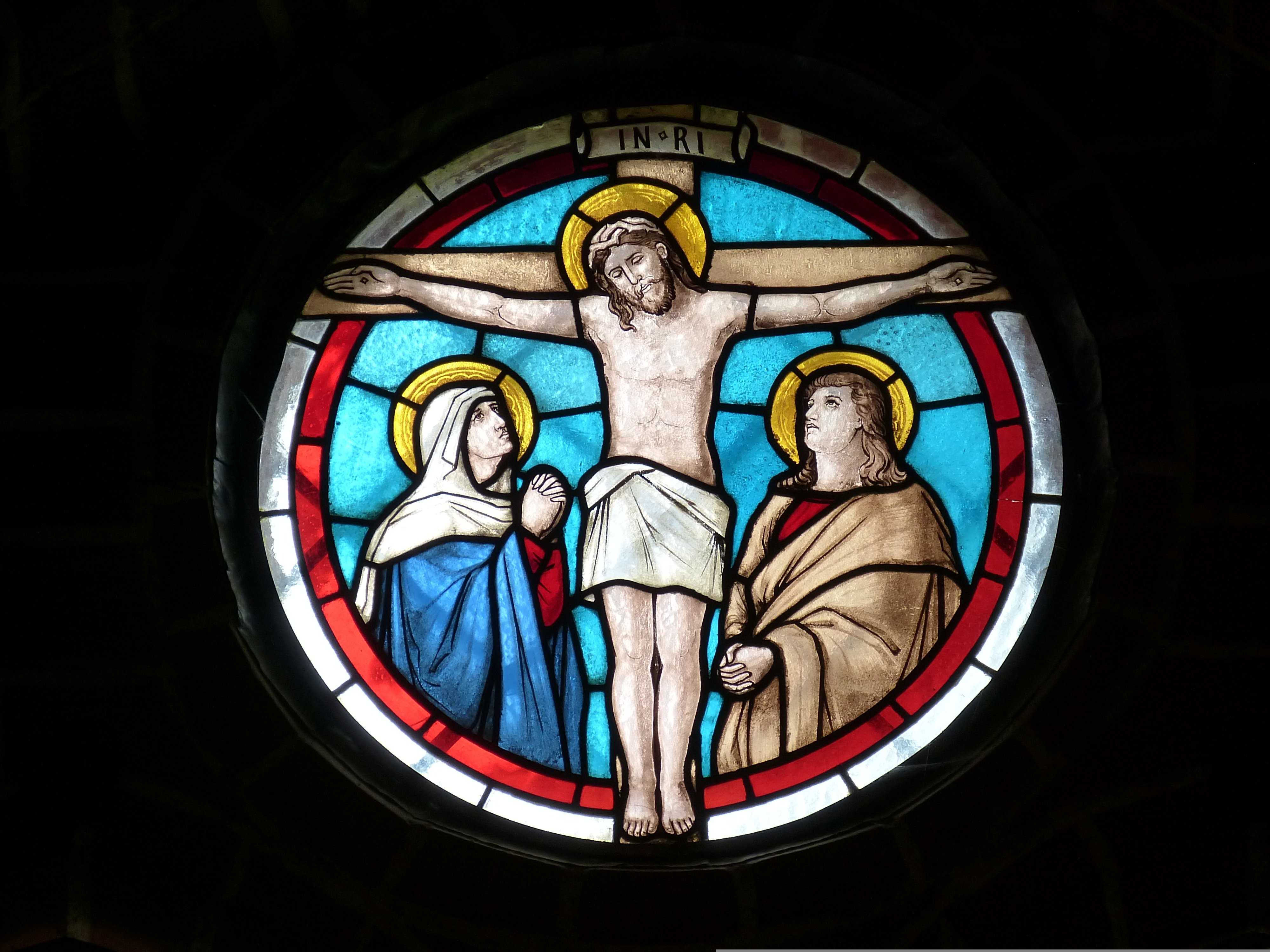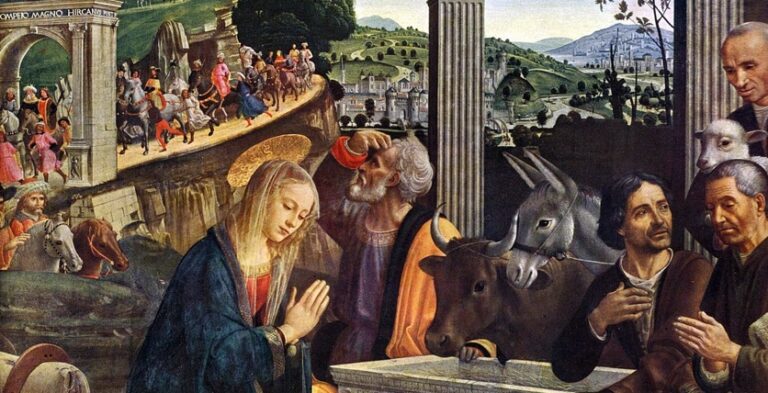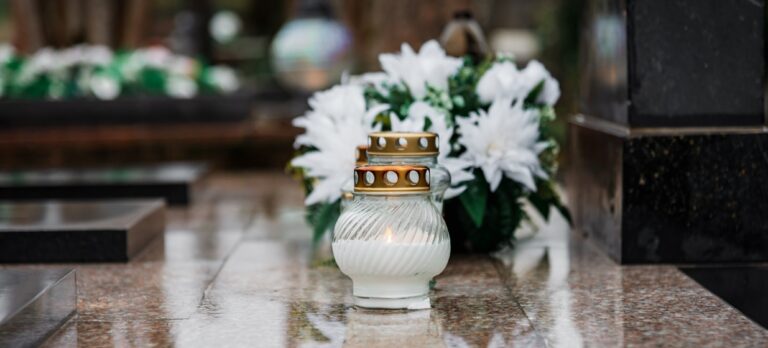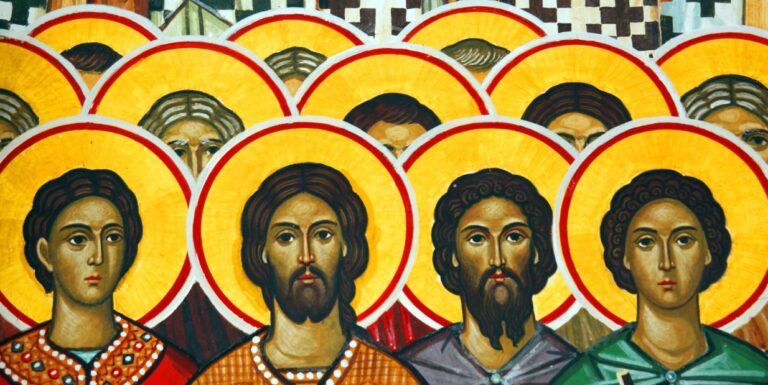
THE EXALTATION OF THE HOLY CROSS

The liturgical tradition does not have a ceremony for every scenario of loss but it does offer a rich ritual repertoire from which we can draw inspiration and hope. On this Seeds of Faith blog, Simone Brosig explores how the liturgical year can help us to ritually recognize, hold and welcome the grief of those among us.
Over the past nine months I made a series of major decisions. The follow-through has not always gone smoothly. The process has been painful and I have experienced disappointment and suffering. For a while I got caught in a cycle of revisiting the decisions, re-evaluating them, analyzing them and trying to identify where I went wrong. Should I have taken a safer route? My friends remind me that in many respects my hand was forced, that the decisions were for a greater good, that I made courageous choices. Yet, amidst the consequences, I am tempted to be hard on myself.
We are hard-wired to avoid suffering and to assign blame. But on this feast of the Holy Cross I wonder if it’s a bit like saying to Jesus, why did you keep opening your mouth? You knew people were out to get you. Why didn’t you keep quiet? Why did you associate with someone you knew would betray you? Instead, Mary and John were at the foot of the cross loving Jesus, not blaming him. Jesus could have made different choices and avoided crucifixion but then where would we all be?
We are disciples, called to live in imitation of Jesus on earth and to enter into the Paschal Mystery with our own lives. You probably know this short verse from the popular devotion of Stations of the Cross:
We adore you, O Christ, and we bless you
Because by your holy cross, you have redeemed the world
This processional devotion, by which we walk the path Jesus did, carrying the cross through Jerusalem to the Crucifixion, was promoted in the Holy Land in the thirteenth century by the Franciscans. Not everyone can make the pilgrimage to the Holy Land so the faithful adapted the devotion to something of an imagined route that we walk with stopping points (stations) constructed outdoors in our local area or markers placed inside our churches or even booklets we can follow while remaining stationary in a pew or arm chair at home. Much like our local stations, this prayer is actually a shortening of a longer prayer written by St. Francis of Assisi for the friars to offer whenever they visited churches:
We adore you, Lord Jesus Christ, in all your churches throughout the whole world
and we bless you because by your holy cross you have redeemed the world.
St. Francis sent his friars to evangelize and wanted them to know that they could encounter Jesus wherever they were. The same could be said for us. Wherever we are and also in whatever age, the Cross of Jesus is present to us not only as a sign of suffering but of the entire Paschal Mystery – the death, rising, and ascension of our Lord.
Redemptive suffering always seems like dangerous territory. We don’t want to condone violence or court affliction. Still, sometimes life hands us lemons so the alternatives are to continue suffering or make lemonade. That is the exaltation of the Cross, though truth be told, some days it feels like the exhaustion of the Cross.
It isn’t easy but taking a risk, putting yourself on the line and carrying the burden, even with the help of your friends, is a participation in the Paschal Mystery. The Cross was not a mistake; it was the Father’s will. I can’t know for certain if my choices were one or the other but I can review the decisions with curiosity rather than blame and I can problem-solve the outcome in prayer as an occasion for graced growth or healing. The crosses we encounter need not have the final word. Raised up with faith, they can transform and exalt us for a purpose beyond what we could have ever imagined! This is the paradox of the cross: periods of exhaustion, humiliation, and death become occasions for triumph, honour and new life.
The liturgy for today’s Exaltation of the Holy Cross ties all these elements together to encourage us in our trials. The second reading, when the feast falls on a Sunday (when it falls during the week, you can choose the Old Testament reading instead), is the canticle from Philippians (2.1-6) that proclaims the humiliation of Christ through his obedience on the cross and the glorification and exaltation that followed. This hymn also appears often in the Liturgy of the Hours. I recommend it to you for reflection and maybe even for memorization, as a prayer to draw upon in times of suffering.
Though he was in the form of God,
Jesus did not deem equality with God
something to be grasped at.
Rather, he emptied himself
and took the form of a slave,
being born in the likeness of men.
He was known to be of human estate
and it was thus that he humbled himself,
obediently accepting even death,
death on a cross!
Because of this,
God highly exalted him
and bestowed on him the name
above every other name,
So that at Jesus’ name
every knee must bend
in the heavens, on the earth,
and under the earth,
and every tongue proclaim
to the glory of God the Father:
JESUS CHRIST IS LORD!
Interestingly, in the alleluia verse the liturgy calls the assembly to respond to this reading with praise through the prayer adapted from St. Francis:
We adore you, O Christ, and we bless you
Because by your holy cross, you have redeemed the world.
Although the establishment of this feast day commemorates three distinct historical events (The finding of a relic of the Cross in the fourth century; the dedication of two churches on the site, today the Church of the Holy Sepulcher; the retrieval of the relic from thieves in the seventh century and its triumphal procession back to Jerusalem), the liturgy itself recalls the theme of Good Friday. It invites us to reflect upon the paradox of the Cross in adoring Christ in our own churches, in our own corner of the world, in our own day and age, amidst our own experience of suffering. When we are exhausted by grief and loss, may we find hope and consolation by entering the Exaltation of the Holy Cross.
Simone Brosig is an educator, author, and liturgy consultant with a PhD in Medieval Studies and a MA in Pastoral Liturgy from the University of Notre Dame. She writes and teaches about living the liturgy. Simone is a near-native Calgarian, who enjoys spending her free time “forest bathing” in the Rockies and learning languages. Simone’s new book, Holy Labours: A Spiritual Calendar of Everyday Work, can be found here.


